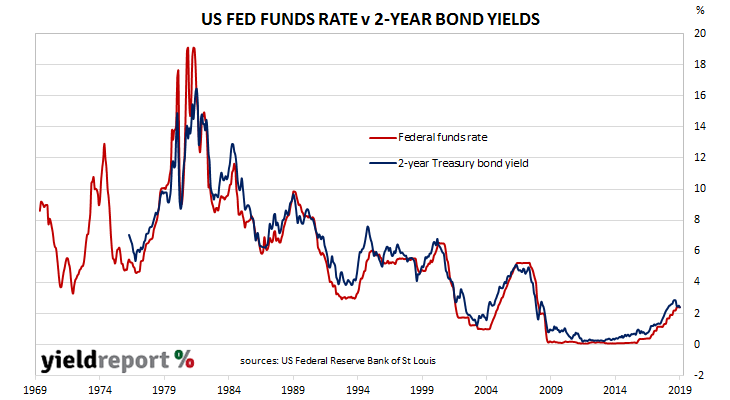The US Federal Reserve began raising its official interest rate, known as the federal funds rate, in December 2015. After 2015, the US Fed waited another year before it raised its official interest rate again in December 2016. It then raised rates another four times during 2018, the latest at the December meeting of the Federal Open Markets Committee (FOMC).
As expected, the FOMC held the federal funds rate steady in the range of 2.25% to 2.50% at its latest meeting. However, it also announced it had trimmed GDP growth forecasts for 2019 and 2020 and it plans to end what has been dubbed “quantitative tightening” later this year. Westpac’s Head of FX Strategy Richard Franulovich said, “Markets were universally poised for a very benign outcome and the Fed dutifully delivered, their message overall matching the most dovish of expectations.”

Although the FOMCS’s decisions had been largely flagged in advance, US bond yields fell noticeably and the USD generally weakened. By the end of the US trading day, 2-year Treasury bond yields had dropped by 8bps to 2.39%, the 10-year yield had fallen by 9bps to 2.53% and 30-year yields had lost 6bps to 2.97%. The USD was weaker against all the major currencies except for sterling while the implied probability of a December rate cut increased from 24% to 34%.

